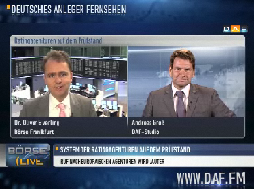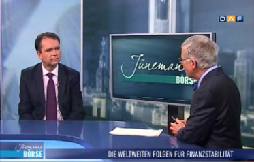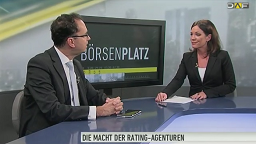« Bonitätsnachweis in der Automobilindustrie | Home | AAA für First Private Aktien Global »
Market Turmoil and Ratings
Von Dr. Oliver Everling | 14.Mai 2008
„It seems that whenever there is turmoil in the credit markets, the rating agencies come under fire“, says Roger P. Nye, President, Global Investment Advisors, Inc., Carlsbad, California, USA (www.gia-inc.com). „Their veracity and credibility are questioned. They are accused of tardiness in rating changes or lack of understanding of complex financial instruments, which has either caused or exacerbated the turmoil.“
In the wake of the recent global credit crunch and default of some highly rated structured vehicles built around a portfolio of sub-prime mortgages in the U.S. and Europe, Moody’s and S&P have taken another hit from a range of critics. They are being accused of assigning high ratings to sub-prime securities and then failing to react quickly when borrowers began defaulting on mortgage loans backing the bonds. Both the US Congress and the European Union have promised hearings on the „culpability“ of the agencies. Lawsuits against the ratings industry are being mooted. Let’s look at the fallout and evaluate some of the allegations and responses.
Given the rapid rate of financial innovation in recent years and the lack of transparency inherent in multi-layered structured deals, says Nye, investors must take some blame for jumping into this asset class while not fully understanding the instruments in question. Investors underestimated the risks that led to the crisis. Didn’t investors in sub-prime debt know that the American mortgage industry was over-extending itself with questionable loans to non-creditworthy buyers? The agencies were publicly warning about this at least since January 2006.
Investors must upgrade their understanding of what ratings represent, insists Nye. The agencies have a valid point when they say that users of ratings misused the ratings in this case. Many investors and critics were assuming that ratings implied (a) a measure of liquidity, (b) a proxy for pricing, or (c) the potential for volatility. In truth, ratings are just an estimate of default risk (and in the case of Moody’s, that plus expected credit loss).
„Did investors really believe that ratings were a forecast of illiquidity�??the difficulty of selling assets at a reasonable price�??when no one can predict the timing and depth of an illiquid market? The agencies always stress that investors must look at the assumptions underlying a rating assignment and must use ratings only as one tool in the investment decision. Here we have a liquidity crisis, not a solvency crisis. If investors“, continues Nye, „based their decisions on wrong assumptions or on ratings alone, then their decisions were misguided.“
Themen: Nachrichten | Kommentare deaktiviert für Market Turmoil and Ratings
Kommentare geschlossen.
 Börse hören. Interviews zu aktuellen Ratingfragen im Börsen Radio Network. Hier klicken für alle Aufzeichnungen mit Dr. Oliver Everling seit 2006 als Podcasts.
Börse hören. Interviews zu aktuellen Ratingfragen im Börsen Radio Network. Hier klicken für alle Aufzeichnungen mit Dr. Oliver Everling seit 2006 als Podcasts.










